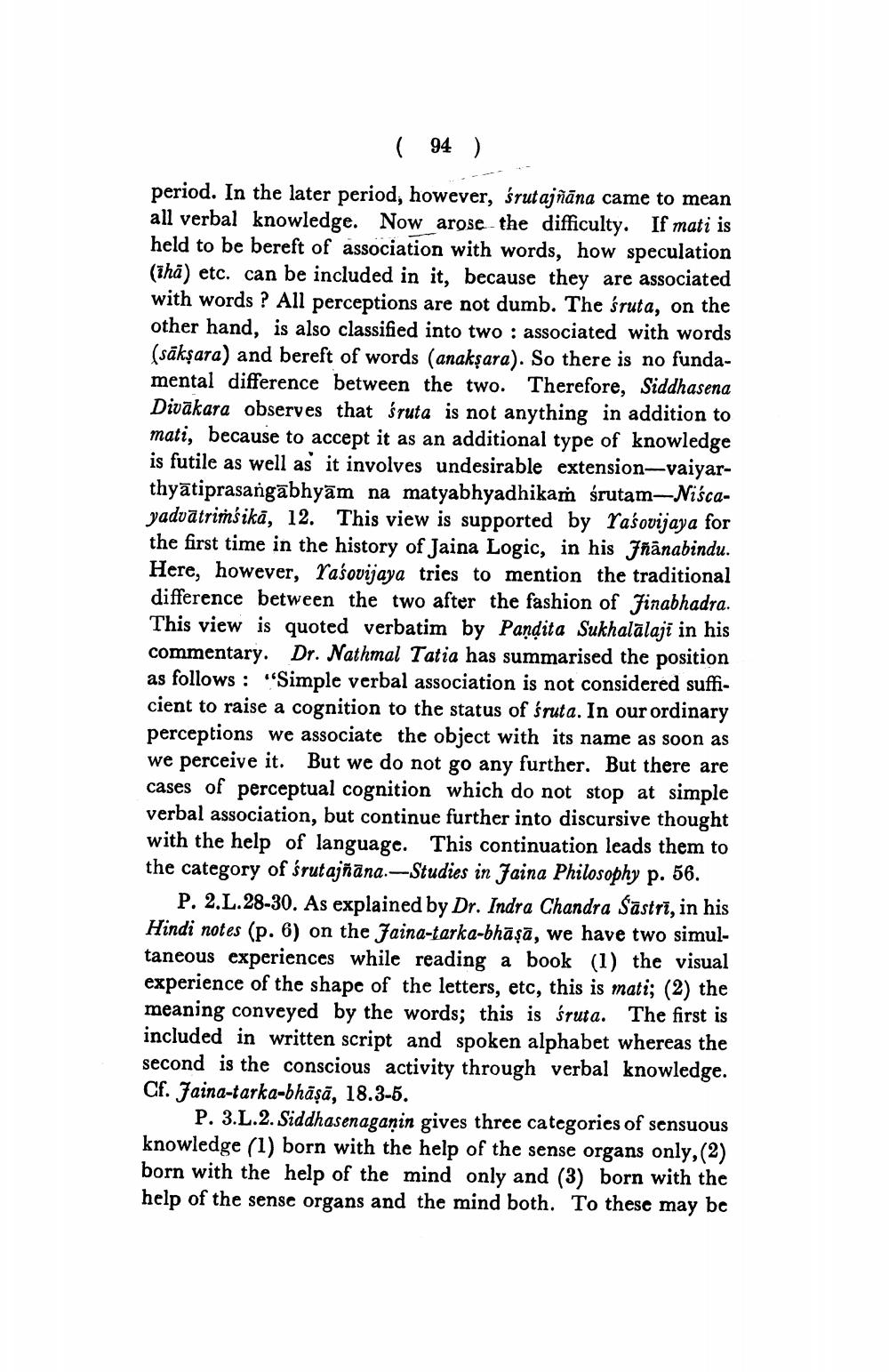________________
(
94
)
period. In the later period, however, śrutajñāna came to mean all verbal knowledge. Now arose the difficulty. If mati is held to be bereft of association with words, how speculation (Tha) etc. can be included in it, because they are associated with words ? All perceptions are not dumb. The śruta, on the other hand, is also classified into two : associated with words (sākşara) and bereft of words (anakşara). So there is no fundamental difference between the two. Therefore, Siddhasena Divākara observes that śruta is not anything in addition to mati, because to accept it as an additional type of knowledge is futile as well as it involves undesirable extension-vaiyarthyātiprasangabhyam na matyabhyadhikam śrutam-Niścayadvātrimśikā, 12. This view is supported by Yasovijaya for the first time in the history of Jaina Logic, in his jñānabindu. Here, however, rasovijaya tries to mention the traditional difference between the two after the fashion of Jinabhadra. This view is quoted verbatim by Pandita Sukhalalaji in his commentary. Dr. Nathmal Tatia has summarised the position as follows: "Simple verbal association is not considered sufficient to raise a cognition to the status of śruta. In our ordinary perceptions we associate the object with its name as soon as we perceive it. But we do not go any further. But there are cases of perceptual cognition which do not stop at simple verbal association, but continue further into discursive thought with the help of language. This continuation leads them to the category of śrutajñāna.–Studies in Jaina Philosophy p. 56.
P. 2.L.28-30. As explained by Dr. Indra Chandra Šāstrī, in his Hindi notes (p. 6) on the Jaina-tarka-bhāṣā, we have two simultaneous experiences while reading a book (1) the visual experience of the shape of the letters, etc, this is mati; (2) the meaning conveyed by the words; this is śruta. The first is included in written script and spoken alphabet whereas the second is the conscious activity through verbal knowledge. Cf. Jaina-tarka-bhāṣā, 18.3-5.
P. 3.L.2. Siddhasenaganin gives three categories of sensuous knowledge (1) born with the help of the sense organs only,() born with the help of the mind only and (3) born with the help of the sense organs and the mind both. To these may be




